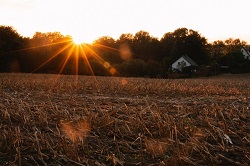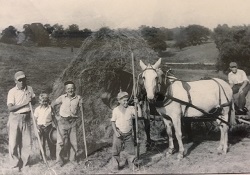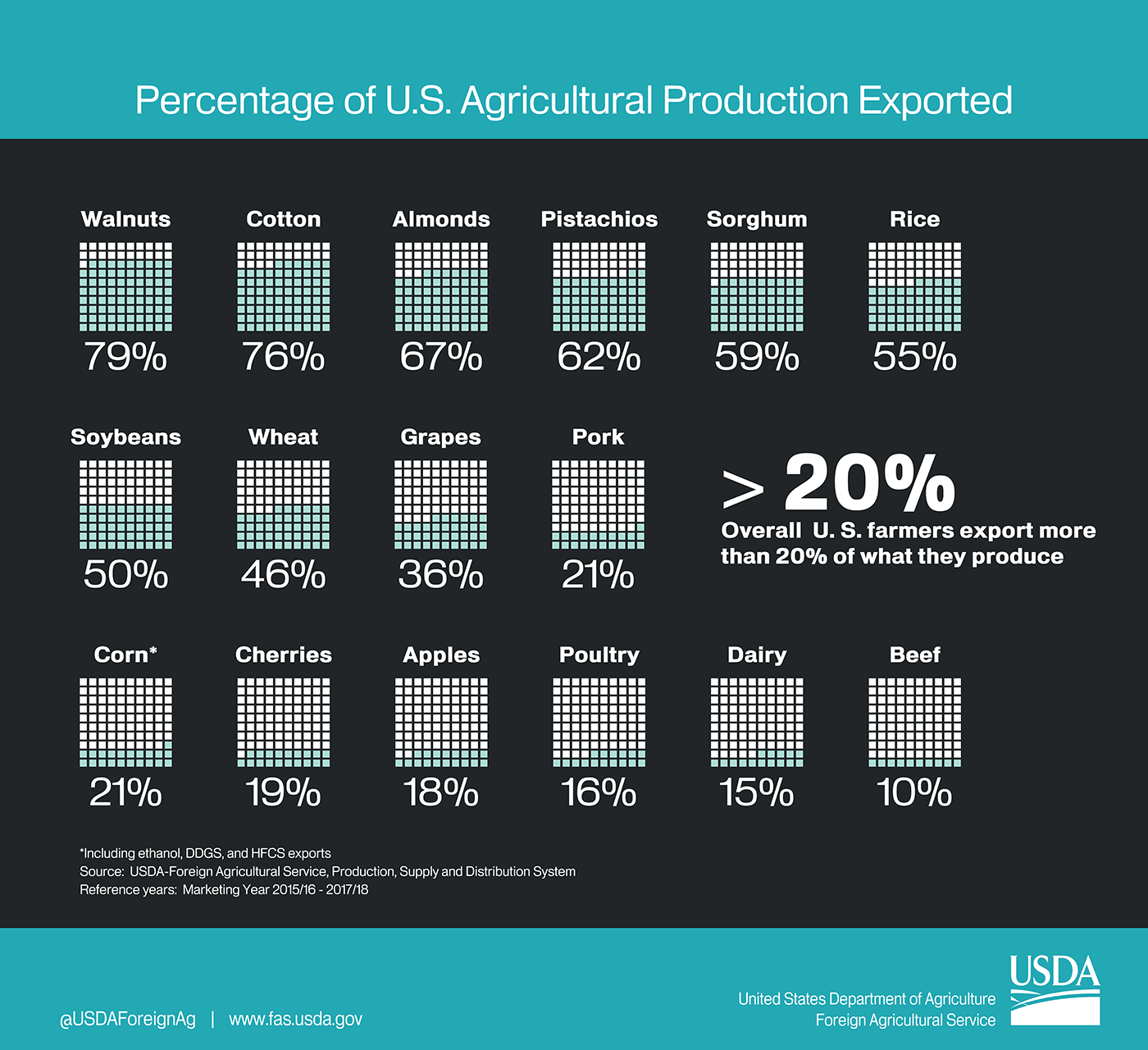
Even though October 12th is designated as National Farmers’ Day in the United States, the challenges and contributions of our farmers deserve recognition on a daily basis. Here are three basic farm facts to consider:
Fact #1 — Farming is not for the “faint of heart”!
When the wrath of Mother Nature destroys planting schedules and political posturing alters trade options, farmers have to be resourceful. In early June, one-third of the crops normally planted in the Midwest went unplanted because of floods. Across the country, the “barrage of wet weather this spring left a record-shattering 20 million acres unable to be planted — an area nearly the size of South Carolina.”1 When this happens, farmers must look for a late season crop or participate in a crop insurance type program for compensation. Now some upper Midwest and Western states are experiencing snow and frost before crops are harvested there.
But the reality is, catastrophic weather events happen every year as the effects of climate change seem to be real. Annually, we see droughts, extreme weather conditions, and increasing temperatures and heat, which not only affect the way farmers and ranchers do business but our overall global food supply. A recent Forbes article cited a new report from the Intergovernmental Panel on Climate Change (IPCC), which found that the biggest impact climate change could have is on our food supply. Scientists estimate that for every one degree the planet heats up, the yield of staple cereal crops will decline by 10 percent 2 and nutritional quality may be compromised. So, what does this mean for today’s farmers and ranchers? Primarily it means they will have to innovate and implement climate-smart practices, 3 which leads us to Fact #2.
Fact #2 — If we farmed today like yesterday, we would use more resources for less food

The Smith Family Farm circa 1940
Let’s face it, we have less resources to use and more people to feed. According to the American Farmland Trust, 175 acres of tillable land is lost every hour in the United States due to urban/suburban sprawl. Today, there are slightly more than two million farms and ranches with an average size of 441 acres, utilizing 900 million acres. That may sound like a lot of land, but 50 percent less land per person is being used today than 45 years ago to produce meat, dairy and poultry for a growing population. Today, one farmer supplies food for more than 155 people worldwide, compared with 25.8 in 1960.
With predicted population growth, agriculture will have to innovate. According to the U.S. Farmers and Ranchers Alliance, 30 Harvests are the number of crop cycles left before 2050, when the global population is expected to reach 9.8 billion. It is predicted that food production will need to increase by 70 percent to feed the world and produce the same amount of food that humankind has produced in total over the past 8,000 years.3 Farming practices have continuously evolved over the years and new strategies are needed now more than ever. Today, it’s more than just how much food is grown or raised. It’s ensuring food is produced in a sustainable way through water quality management, soil health and storage of carbon in the soil, minimizing inputs and improving biodiversity — approaches known as “climate smart agricultural practices” or CSAs. 3 CSA practices like no-tillage (first developed in Kentucky), cover crops and rotational grazing of animals are a few current examples. With increased demand for food globally, the need for new technologies and practices will continue.
Fact #3 — All things local are global
We celebrate the growth of local food systems and farmers’ markets in our communities as this contributes to farming diversification, growth of local economies, and the farm-to-table connection. However, agricultural production plays a significant role in our overall economy. Today, U.S. farmers export more than 20 percent of what they produce, with nuts and cotton being the highest export (in the 60-70 percentage range) to soybeans at 50 percent and less than 20 percent attributable to apples, cherries, poultry, dairy and beef. According to the USDA, in 2018, approximately $140 billion of agricultural products were exported, while nearly $129 billion of agricultural products were imported. At present, our export market is below the 2018 level which contributes to farming challenges. We can talk local, but we live in a global food environment! Nearly all of our coffee, spices and cocoa are imported along with the majority of our fish and shellfish and about half of our fruit and fruit juices. Mexico is our largest supplier of fresh or frozen fruit and vegetables, followed by Chile and Canada for fruits and vegetables, respectively.

Credit: U.S. Department of Agriculture
As we celebrate World Food Day on October 16, it becomes clearer that the variety and abundance of food most of us have access to is due to the hard work of farmers and ranchers not just in our own communities but across the globe. Unfortunately, the availability of, and basic right to, food is not equally distributed across our communities or the globe. Hunger is a reality. One in nine persons globally experience chronic hunger, while one in six here in America go hungry.
Sharing Food Across the Table
As we salute our farmers and ranchers for being committed to providing food on our table, let us be equally committed to sharing food across more tables, more communities and the globe. It is our joint responsibility to think differently about how we produce, distribute and prevent waste of our food supply. So let’s celebrate the farmer and value our food supply, but also commit to finding ways for all of us to enjoy the bounty of the harvest.
References
1. “I’m standing here in the middle of climate change: How USDA is failing farmers,” Helena Bottemiller Evich, Politico, October 15, 2019
2. “The Global Food Supply Chain Faces Daunting Challenges in the Coming Decades,” Steve Banker, Forbes, October 10, 2019
3. U.S. Farmers & Ranchers Alliance, “30 Harvests: Creating the 2050 Food Systems for Future Generations,” Website Resources
4. U.S. Farmers & Ranchers Alliance, “30 Harvests: Creating the 2050 Food Systems for Future Generations,” YouTube Video
